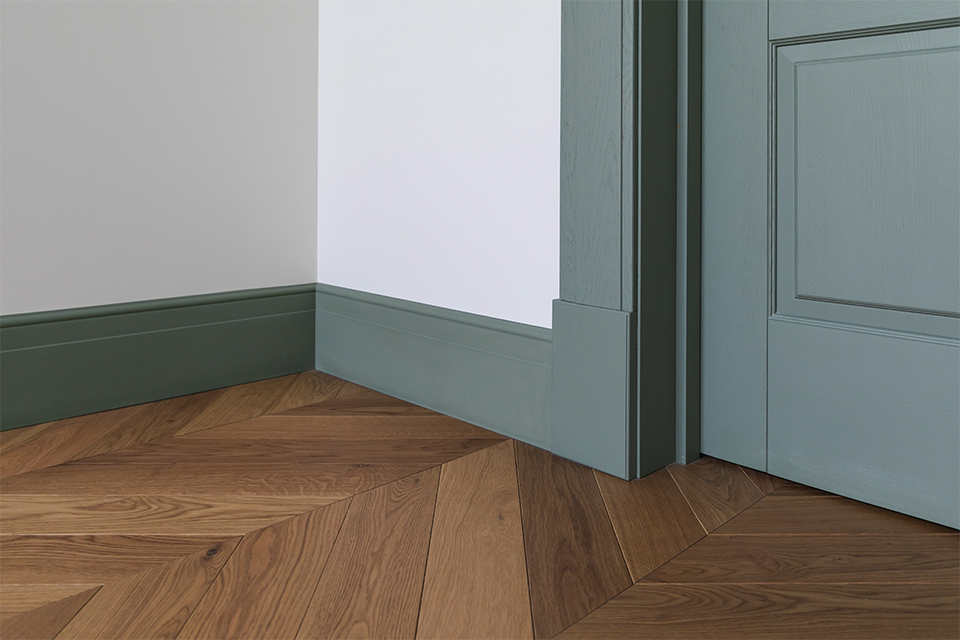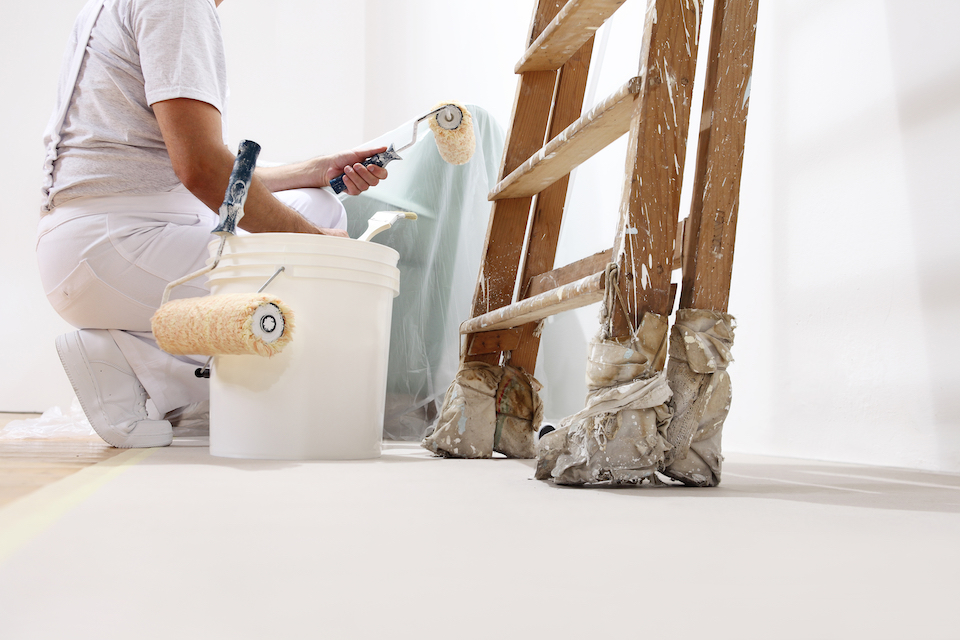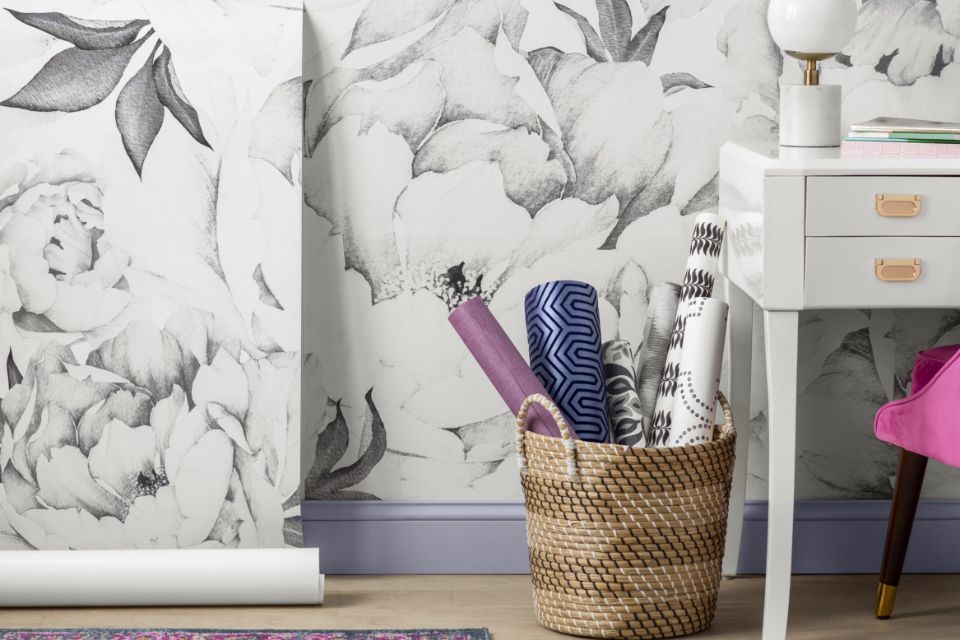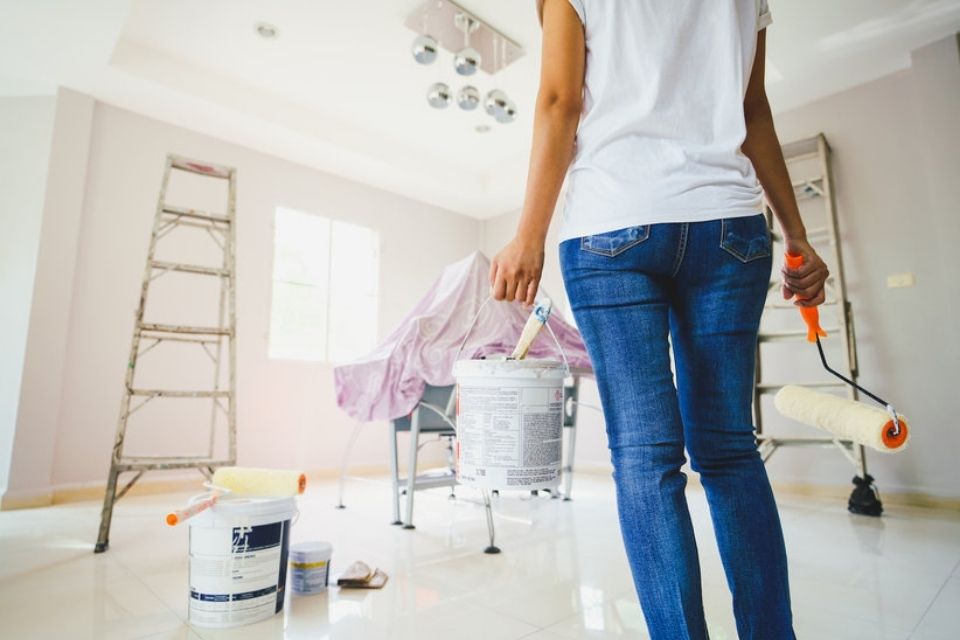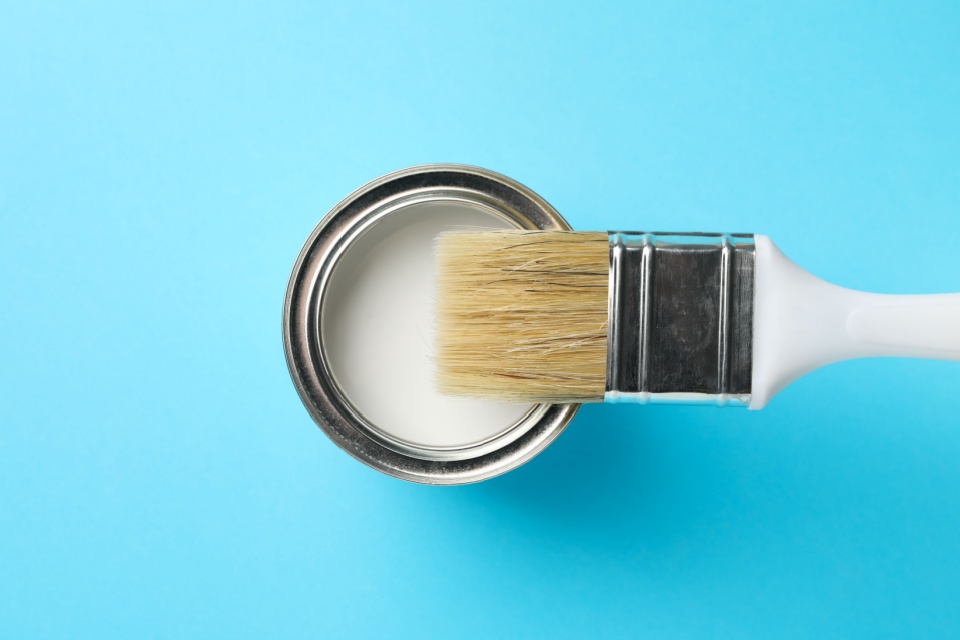How Much to Fit Skirting Boards?
If you debate having skirting boards installed in your home but aren't aware of the costs or anything to do with installing skirting boards, then we are here to help!
Small details can sometimes give your home a stylish appearance. For example, is your floor made of dark or light wood? Can you have a photograph rail that runs all around the upper half of your walls or a dado rail that runs down the centre of the wall?
Skirting boards are necessary for forming the crossings between construction materials, potentially concealing unsightly or uneven joins.
They also act as a barrier, protecting the wall from scuff marks and scratches caused by people and pets walking through it and vacuuming. However, skirting boards provide more than practical benefits; they are essential for interior design.
The type of skirting and architrave used, the strength of the materials, the size of your room, and the number of rooms needing installation will all impact the overall cost of your project.
When you hire a professional tradesperson to replace your existing skirting or architrave, the cost usually includes the materials and the tradesperson's labour fees.
The overall costs for manual labour will be determined by the scope and complexity of your project. Of course, the more rooms that require installation, the longer the job will take to complete, raising the labour cost.
You must decide on the style and quality of skirting you want to be installed. More intricate interior moulding styles will be more costly to purchase, affecting your project's budget.
So, how much does a new skirting board cost?
MDF, Softwood, and Hardwood are the three most common materials used for inside skirting and architrave. MDF is the most popular choice among property owners and the most cost-effective option.
MDF skirting boards start at around £8 per length and are generally available in 4-meter lengths. MDF skirtings are available in various sizes, thicknesses, and designs.
Professional skirting board instalment can cost around £300 - £500 for a standard size, basic room without bay windows and a straight-forward shape, but more complicated areas with the same size with much more corners and edges to consider could cost closer to £800 for materials and labour.
In addition, most skirting board fitters will include a small waste removal fee in their work quote.
Consider the style as well as the age of your home. Don't choose a skirting or a door based solely on its appearance.
The lack of a unified theme ruins numerous house designs. Instead, choose the desired style, door, ironmongery, plaster junctions, and aesthetic.
Consult your architect or designer about your preferences. A recessed skirting and shadow gap necessitate advanced planning and additional material and labour costs.
A variety of factors contribute to the overall cost of installing skirting boards which we will discuss later.
Skirting Board Prices
Below is a table to help you develop a better understanding of how the skirting board prices and cost-influencing factors compare.
The rates listed below do not include labour costs.
| Skirting Board | Cost (per metre) |
|---|---|
| MDF skirting board | £3 - £10 |
| Beech skirting board | £8 - £25 |
| Pine skirting board | £4 - £12 |
| Oak skirting board | £10 - £25 |
| Walnut skirting board | £15 - £40 |
| Plastic skirting board | £5 - £20 |
- How Much to Fit Skirting Boards?
- What are the Supply Costs for a Skirting Board Installation?
- What are the Additional Costs of Installing a Skirting Board?
- Tradesmen Costs for Skirting Board Installation
- How Long Does It Take to Install a Skirting Board?
- Types of Skirting Boards
- How Much Does It Cost to Remove a Skirting Board?
- FAQs
- Sources
What are the Supply Costs for a Skirting Board Installation?
Installing a skirting board can be a complicated job; however, having the correct supplies will make a massive difference!
Here we will go through the various supply costs to install a skirting board, so you know what you will be saving if you decide to do it DIY!
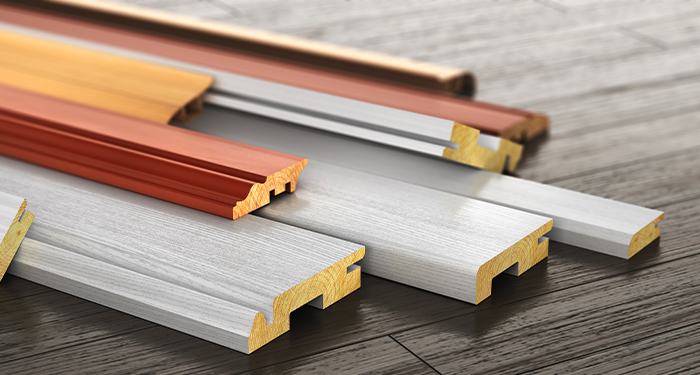
First, you will need to think about safety, so safety goggles are a must. These usually cost around £1.50 - £6 depending on the material and strength of the goggles you want.
Protective gloves are also needed as there are other factors involved that could injure or make a mess of your hands. This costs £1.50 - £4, a dust mask will cost £3 - £15.
Mitre boxes are used to cut mitred joints in skirting, architrave, and decorative wood and will cost you between £7 and £13, depending on the type.
Panel saws are ideal for coarse and fine cuts in wood and typically cost between £6 and £8. A drill will set you back between £60 and £120.
Glues are used to bond items together; make sure you have the right product for the job to get the strongest hold; they typically cost £5 to £12.
Coping saws, which are ideal for precision cutting of straight lines and curves in wood, will cost you between £9 and £14.
MDF skirting boards typically cost between £8.50 and £20. Pine skirting boards cost between £7 and £14, while oak skirting boards cost between £20 and £30.
Sheet wood is the easiest job of almost any joinery project, and it typically costs between £15 and £40.
Depending on where you are installing the skirting boards, you may need to purchase Masonry nails, which are specifically made for use on hard surfaces such as concrete and brick. Masonry nails typically cost between £4 and £8.
PVA glue is used to bond items together; make sure you have the right product for the job to get the strongest hold; this usually costs between £6 and £22. Tape is an absolute necessity in any decorating project or toolbox; expect to pay between £4 and £5 for the tape.
The table below will break down the supply costs of installing skirting boards.
| Supply | Cost |
|---|---|
| Protective gloves | £1.50 - £4 |
| Dust mask | £3 - £15 |
| Mitre box | £7 - £13 |
| Panel saws | £6 - £8 |
| Drill | £60 - £120 |
| Glue | £5 - £12 |
| Coping saws | £9 - £14 |
| MDF skirting boards | £8.50 - £20 |
| Pine skirting boards | £7 - £14 |
| Oak skirting boards | £20 - £30 |
| Sheet wood | £15 - £40 |
| Masonry nails | £4 - £8 |
| PVA glue | £6 - £22 |
| Tape | £6 - £22 |
What are the Additional Costs of Installing a Skirting Board?
When having your skirting boards installed, there could be additional costs that pop up and affect your overall cost.
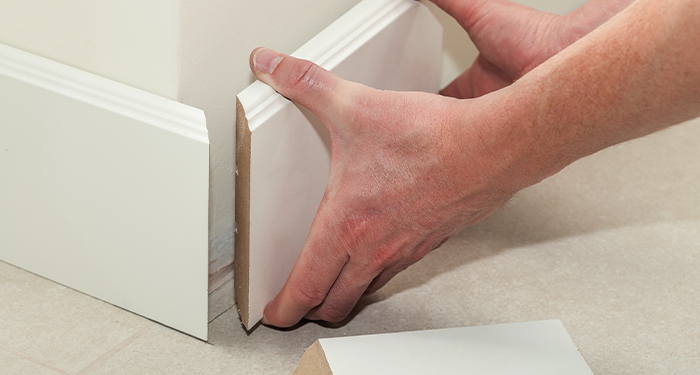
Or you might decide to get other work done to your home at the same time. Here we will go through the different additional costs when installing a skirting board.
Painting and Decorating
When redecorating your home, keep the costs of interior painting for different projects in mind. The typical cost of painting a room, for example, ranges from £180 for a small bedroom to £600 for a large living room.
You will also have to consider the interior designing costs for other fixtures, like skirting boards, which can range from £180 to £350 and windows, which usually range from £400 to £1,500.
Other jobs involve painting doors, which can cost between £220 and £1,600, and re-painting kitchen cabinets, which usually cost between £600 and £1,000.
Wallpapering is also another high decorating cost, with prices ranging from £180 for a small room to £600 to strip as well as hang the wallpaper, while installing internal cladding costs between £1,500 and £2,500.
A standard quote for hiring a painter and decorator ranges between £100 and £300 per day for large decorating jobs like painting and wallpapering multiple rooms.
They could only cost £15 to £40 per hour for smaller paint jobs, including painting door frames or kitchen cabinets.
The duration of a decorating job also is important because most tradesmen start charging for their time, so having an idea of how long a job will take will help you determine the total cost.
For further information, please refer to our guide on interior painting and decorating costs.
New Floor
The typical flooring installation cost is between £400 and £1,000 in most cases. The cost of installing new flooring, on the other hand, will vary depending on the type of flooring you want to install and the size of the room (s).
Carpet is a type of textile flooring that is typically made of wool, nylon, or polyester. The average cost of flooring is between £80 and £2,625.
Laminate flooring is a modern synthetic floor solution that looks like more pricey floor options like wood and stone. The cost of installing laminate flooring typically ranges between £150 and £1,625.
Hardwood flooring is made from various types of solid wood, such as white oak, maple, beech, red cedar, and others. The cost of installing wooden flooring ranges between £720 and £2,900.
Vinyl flooring is related to laminate flooring, but even so, it contains all synthetic fabrics such as fibreglass, PVC vinyl, and plasticiser. The average cost of installing vinyl flooring ranges from £110 to £1,125.
Tiles are typically made of porcelain or ceramic, which are used as floor coverings in bathrooms or kitchens. Tiling installation typically costs between £150 and £5,000. PVC skirting boards installations are most common with this type of flooring.
For further information, please refer to our guide on flooring installation costs.
Plastering
A single wall will most likely cost between £100 and £200 to plaster. Plastering a room could cost anywhere between £300 and £1,200. If you only want a ceiling plastered, expect the price to be between £3,00 and £500 for a medium-sized ceiling.
The size of the area which needs plastering, the state of the area, and whether plasterboards are required are all factors that could influence how long a plastering job will take.
You will also need to consider whether only skimming is required if there are any waste removal jobs that might be required, and your location in the UK.
For further information, please refer to our guide on plastering costs.
Skip Hire
The typical cost to hire a 2-yard skip is £60 to £120, with a 4-yard skip costing on average £100 to £260 as well as a 6-yard skip which costs £110 - £238.
An 8-yard skip can cost between £150 and £375 on average. A 10-yard skip costs £170 and £250, 12-yard skip costs around £220 - £450.
A 14-yard skip will usually cost £200 and £300 on average; a 16-yard skip usually cost around £220 and £420; an 18-yard skip will cost between £275 and £400, and a roll-on type of skip will cost between £290 and £400.
For further information, please refer to our guide on skip hire costs.
Location
Due to the fact tradespeople' prices vary across the country, where you live will have an impact on the cost of installing skirting boards.
On the other hand, hiring costs in the southeast are usually higher than the national average, especially in London. However, costs in the north of England, Scotland, and Northern Ireland are generally lower than in the rest of the country.
Number of Tradesmen
The cost of skirting board installation is also defined by the amount of tradespeople needed, which is impacted by the size/type of skirting boards. The more tradespeople needed, the more expensive the installation will most likely be.
Tradesmen Costs for Skirting Board Installation
You will need the services of a carpenter to install skirting boards. Because skirting boards are relatively simple projects for them, they may charge at the lower end of the spectrum. Request quotes from carpenters and inquires about their experience installing skirting boards.
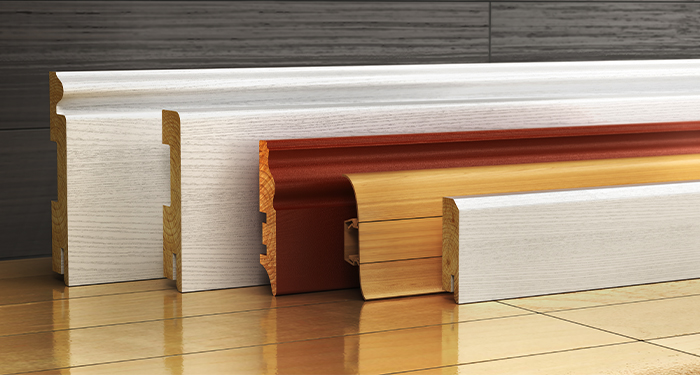
A skilled joiner and labourer will typically work in a team to complete the job, charging between £100 and £175 per day in labour fees.
How Long Does It Take to Install a Skirting Board?
The length of your project will be affected by factors such as the type of skirting board in use, the quality of materials used, the size of your room, and the number of bedrooms requiring installation.
When you hire a professional tradesperson to install your skirting and architrave, the average duration is not long.
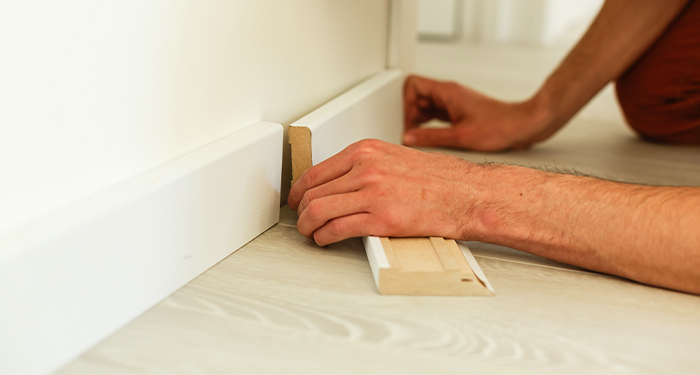
The length of your project will be determined by its size and complexity. Of course, the more spaces that require installation, the longer the job will take to complete, increasing the cost of labour.
It takes very little time to install skirting boards. It all depends on how skilled your carpenter is. In good skirting fitting, the floor is more important than the walls.
If you have high points on the floor and the skirting "seesaws," the skirting will need to be scrubbed. In terms of time, it really depends on the quality of the finish.
If problems arise, but the quality is maintained, a good carpenter will complete the job in no more than two days.
Types of Skirting Boards
Trying to have the idea right can give you an advantage when you have to face your designer, builder, or yourself in the mirror if you are a DIYer! We'll go over the various types of skiing boards, as well as their benefits and drawbacks.
Therefore you can make an informed decision that will enlighten and enhance your home.
Ogee Skirting Board Costs
Ogee skirting board is a classic form that features a continuous s-shaped profile all along the top side of the board. The ogee profile is ideal for adding finishing touches to your room.
Our mouldings are typically made of wood and come in a variety of sizes and finishes to ensure we have the perfect skirting board for your home.
To say the least, ogee skirting boards are the most popular all over the UK. Though this style is associated with classic home decor, it is also popular in modern interiors because it adds a sense of luxury to any space.
The main feature of the Ogee profile is its sloped edge on top, which then 'falls' into a sweeping curve and a carved line below. More ornamented designs with two sets of 'waves' were also available.
The height of Ogee skirtings can range from a subtle 57mm all the way up to 168mm. The one you choose will most likely be determined by the size - or ornamentation - of the space you need to cover. They usually cost £8 - £19.
Pros
- Great for adding finishing touches to your room
- Come in different sizes
- Popular in modern homes
Cons
- It can become rough
Bullnose Skirting Board Costs
The bullnose skirting board is a popular contemporary style of the board due to its minimalistic appearance.
It is a great final touch for a stylish modern house because of its straight edges. We have the bullnose mouldings you need to complete your skirting project, regardless of size or finish.
What distinguishes this skirting board style, also recognised as Pencil Round skirting, is its extremely simple design. The Bullnose skirting may be referred to differently by different suppliers; in our case, it is referred to as the Rounded One Edge profile.
A rounded top edge is the most distinguishing feature of a Bullnose profile. Nothing more, nothing less. Its clean and streamlined surface, devoid of details, makes it yet another staple part of moulding used by builders and carpenters in all types of interiors.
To get into the nitty-gritty, suppose the radius of the curve varies. Alternatively, you may come across a curve that rounds all the way up to the top or simply leads into a flat surface.
It's a no-brainer to go with a Bullnose profile. You don't need to put much thought into it because you know it'll look good and won't be a focal point in the room.
A benefit worth considering is that the absence of sharp edges may make the home safer for families with children running around. It also doesn't get any easier than this when it comes to cleaning your skirting boards! This usually costs £10 - £40.
Pros
- Unique
- Easy to clean
Cons
- Not a popular choice
Lambs Tongue Skirting Board Costs
The Tongue of a Lamb Chamfering is a well-known technique among carpenters and woodworkers. It is made up of a combination of rounded and cubed edges connected by a 45o angled chamfer.
When used in skirting board designs, the chamfered slope usually ends on a vertical surface. This technique is used to add style and soften otherwise sharp edges in a variety of wooden furniture.
Lamb's Tongue profiles have long been associated with class and sophistication. Although this style is appropriate for almost any modern interior, it is especially recommended for Victorian-era homes because this was when Lamb's Tongue shifts and profiles were invented. This usually costs £30 - £40.
Pros
- Classy design
- Modern
Cons
- Expensive
Square Edge Skirting Board Costs
This is unquestionably the simplest solution when it comes to selecting a skirting board profile that complements your interiors; it's also simple to maintain and inexpensive! The Square Edge profile is a skirting board with a single square angle at the top. And-that's-it.
The Square Edge profile has the advantage of easily transitioning into your architraves, emphasising the effect of sharp lines and open spaces throughout the house.
For example, if you paint your walls a colour other than white, a single white line created by the mouldings and flowing into the architraves would make a stunning and subtle visual point. This is priced at £5 per metre.
Pros
- Affordable
- Simple
Cons
- Basic
Torus Skirting Board Costs
A standard Tours design can have a plethora of variations! Its main feature is a convex, semi-circular arch on its front profile, with a curved incline sliding just below it.
Another thing to notice is that the top surface of the moulding is squared and thinner than the rest of the moulding.
The Torus skirting profile is very popular in period-style homes. Suppliers typically offer a broad array of finishing and materials that resemble woods such as oak or walnut, making the Torus profile an excellent choice for renovation. This usually costs £7 - £10 per metre.
Pros
- Affordable
- Good for period-style homes
Cons
- Thinner wood
Ovolo Skirting Boards Costs
Ovolo profile skirting boards, also known as 'Egg Moulds,' have grown in popularity over the last few decades. The Ovolo is like the Ogee and Torus styles in that it has a curve, but the shape is much less rounded. It also ends up on a nub in the skirting board rather than a carved line.
This skirting board profile is used in both modern and traditional properties because it combines the best of both worlds. Its clean lines, easy installation, and ease of cleaning make it an excellent choice for modern homes.
However, it is a subtle level of detail can also complement Victorian or Edwardian homes - especially when avoiding bulky skirting boards! These usually cost £5 - £15 per metre.
Pros
- Easy installation
- Good for several properties
Cons
- Not a popular choice
Square and Grooved Skirting Board Costs
If you like modern and elegant design, this is the place to be! The main feature of square and grooved skirting boards is a groove sculpted into the board, creating a similar horizontal single line running the length of the moulding.
If you've recently become interested in the latest skirting board trends, you may have come across a technique known as Shadow Gap.
Without going into too much detail, let's just say that this contemporary design element has a gap line about 10cm above the floor, giving it a clean, streamlined appearance.
However, this technique is extremely -extremely- expensive and does not allow for any kind of error. A grooved profile comes in handy here. You get a very similar look at a much lower cost! £6 - £10 per metre.
Pros
- Modern design
- Elegant
Cons
- Not suitable for every type of home
Victorian Skirting Boards Costs
Curves, decorations, intricate styles, and luxury are all important features of a Victorian-era home. This architectural style, popular during Queen Victoria's reign, resulted in so many grandiose properties that can still be found today.
Victorian skirting board profiles incorporate all these key features into mouldings with elaborate lines, curves, as well as slopes, making them ideal complements to high-ceiling properties with plenty of space - and lavish style!
A traditional Victorian property will have high ceilings and large windows, and the use of period mouldings such as Victorian skirting boards will ensure that the property retains its era's style and elegance. They cost around £6 - £14 per metre.
Pros
- Ideal for big properties
- Affordable
Cons
- Quite big
Chamfered Skirting Board Costs
Chamfered skirting boards are a contemporary style of the board with such a smooth straight-edged close along the top. Chamfered profiles are among the most popular choices for both builders as well as DIY enthusiasts; in fact, they have become somewhat of an industry standard in recent years.
The sloping edge is the most distinguishing feature of this style. A soft chamfer with just a rounded top end that can be made shorter or longer depending on the model. Its soft shape and simple pattern make it an excellent choice for any type of interior.
Chamfered skirting boards are available in multiple sizes and finishes, so there is one suitable for your home improvement project. This skirting board can cost £20 - £30 per metre.
Pros
- Easy to install
- Come in multiple sizes and finishes
Cons
- Expensive
How Much Does It Cost to Remove a Skirting Board?
In the UK, the average cost of hiring an experienced carpenter to remove skirting boards or a medium-sized room is between £150 and £200. However, it is critical to comprehend the numerous cost-influencing factors that affect the general cost of your project.
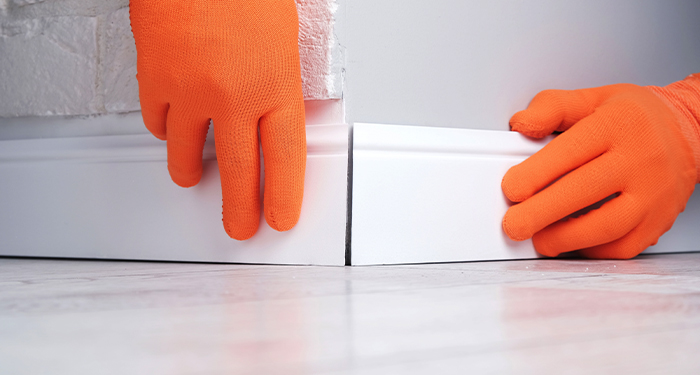
The sort of skirting board used, the quality of the materials used, the size of your room, and the number of rooms needing installations will all have an impact on the overall cost of your project.
The overall costs for manual labour will be determined by the size and complexity of your project. Of course, the more rooms that require installation, the longer the job will take to complete, increasing the cost of labour.
FAQs
Q: How do you cut skirting boards?
A: Because the high glue content in MDF can quickly dull a regular steel blade, it is recommended that you use a saw with just a carbide-tipped blade.
You should use a blade with as many teeth as potential. This lessens the possibility of the MDF chipping as you saw through it. For straight cuts, a table saw would be ideal. Ascertain that the table saw is connected to a suitable dust extraction system.
Because skirting boards are becoming longer in length, straight cuts are required. Because some walls will not require a full length, you will need to cut the board to size with a straight cut. To make straight cuts, you can choose any tool which is used to cut wood.
Q: Is it easy fitting skirting boards?
A: In a basic box-shaped room, it is indeed usually best to start from the left side of the door as well as work your way anti-clockwise around the room. If you have plasterboard walls, the best way to attach skirting to them is with instant-grab adhesive.
Q: What is the best material for skirting boards?
A: There are many different types of wood, including softwoods (Pine in this case) and hardwoods (Oak). MDF, on the other hand, is the most popular material for making skirting boards today.
Q: What tool do you use to cut skirting boards?
A: Most people have used a mitre box, or a mitre saw to cut a mitre. The typical DIYer would use a mitre box to save money, particularly if they don't have to mitre skirting boards very often. For professionals, a mitre saw is a preferred tool (such as carpenters).
Q: Is it easy to remove and replace skirting boards?
A: Removing skirting boards is not the most pleasant of tasks, and while it is relatively simple, there are a few things to keep in mind before you begin. The main goal when removing existing skirting is to avoid damaging the existing plasterwork on the wall.

